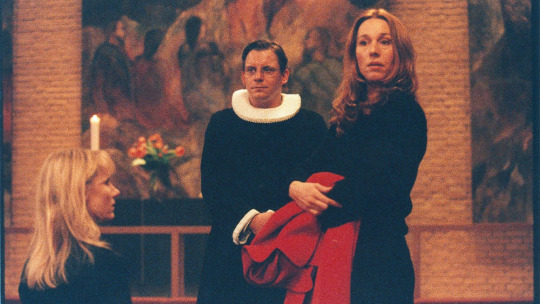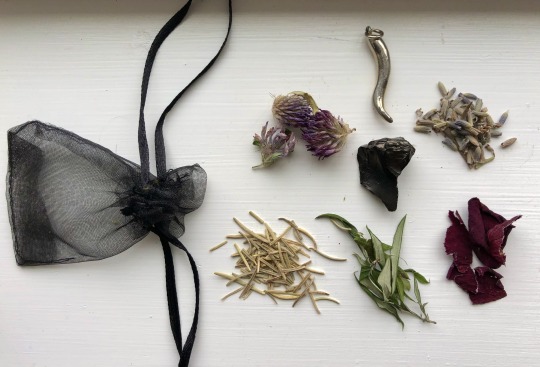#Italian for Beginners
Text
Family Vocabulary - Italian-English (Beginner)
Parents: genitori (pl.), genitore (sing.)
Grandparents: nonni (pl.)
Siblings: fratelli e sorelle (pl.)
Relatives: parenti (pl.)
Mother: mamma (f.)
Father: papà (m.)
Son: figlio (m.)
Twins: gemelli (pl.)
Children: bambini, figli (pl. collective noun)
Newborn: neonato (m.), neonata (f.)
Daughter: figlia (f.)
Grandmother: nonna (f.)
Grandfather: nonno (m.)
Granddaughter: nipote (f.)*
Grandson: nipote (m.)*
Brother: fratello (m.)
Sister: sorella (f.)
Aunt: zia (f.)
Uncle: zio (m.)
Niece: nipote (f.)*
Nephew: nipote (m.)*
Cousin: cugino/cugina (f./m.)
Mother in law: suocera (f.)
Father in law: suocero (m.)
Sister in law: cognata (f.)
Brother in law: cognato (m.)
Husband: marito (m.)
Wife: moglie (f.)
Groom: sposo (m.)
Bride: sposa (f.)
Boyfriend: fidanzato, ragazzo (m.)**
Girlfriend: fidanzata, ragazza (f.)**
Godfather: padrino (m.)
Godmother: madrina (f.)
Widow: vedova (f.)
Widower: vedovo (m.)
Useful adjectives - Aggettivi utili
Married: sposato
Engaged: fidanzato
Separated: separato
Divorced: divorziato
Single: single
Nota bene - Please note!
*the word "nipote" can be used in Italian to describe the relation between both a grandmother/grandfather and their granddaughter/grandson, and an uncle/aunt and their niece/nephew.
**the word "fidanzato/fidanzata" is always used as a synonym for the more common "ragazzo/ragazza", although there is a slight difference between the two terms. The use of "fidanzato/fidanzata" assumes that the couple is officially engaged (with a proposal), whereas "ragazzo/ragazza", two words that normally mean "boy/girl", intend in the everyday context a "boyfriend/girlfriend".
Words that start with "step-", such as stepmother, stepdaughter, stepfather, stepson, and so on, are translated by adding either the suffix -igno/-igna or the suffix -astro/-astra.
Madre -> matrigna
Padre -> patrigno
Figlio -> figliastro
Figlia -> figliastra
Sorella -> sorellastra
Fratello -> fratellastro
#italian#italian language#english#english language#language learning#vocabulary#grammar#italian vocabulary#italian grammar#english vocabulary#english grammar#family#beginner#Italian for beginners
13 notes
·
View notes
Text

Anette Støvelbæk, Anders W. Berthelsen, and Ann Eleonora Jørgensen in Italian for Beginners (Lone Scherfig, 2000)
Cast: Anders W. Berthelsen, Anette Støvelbæk, Ann Eleonora Jørgensen, Peter Gantzler, Lars Kaalund, Sara Indrio Jensen, Karen-Lise Mynster, Rikke Völck, Elsebeth Steentoft, Bent Mejding, Lene Tiemroth, Klaus Gerving, Jesper Christensen. Screenplay: Lone Scherfig. Cinematography: Jørgen Johansson. Production design: Jette Lehmann. Film editing: Gerd Tjur.
1 note
·
View note
Text

Mod note: The film is also known as Italiensk for begyndere.
1 note
·
View note
Text
Roman mythology
like many ancient mythologies, includes a diverse array of gods and goddesses, each with their unique attributes and roles. The Roman gods and goddesses were often adapted from Greek deities and other ancient cultures.
Here are some of the major Roman goddesses:
1. Juno: Juno was the queen of the gods and the goddess of marriage, childbirth, and women. She was the wife of Jupiter (the Roman equivalent of Zeus). Juno was often depicted as a regal woman, wearing a diadem and holding a scepter. She was also associated with the protection of the Roman state.
2. Minerva: Minerva was the goddess of wisdom, strategy, and warfare. She was the Roman equivalent of the Greek goddess Athena. Minerva was considered to be a virgin goddess and was often depicted wearing a helmet and carrying a shield and spear. She was also associated with arts, crafts, and education.
3. Venus: Venus was the goddess of love, beauty, and fertility. She was the Roman counterpart of the Greek goddess Aphrodite. Venus was often depicted as a beautiful woman and was closely associated with the city of Rome. She had a son named Cupid, the god of love, who played a significant role in Roman mythology.
4. Diana: Diana was the goddess of the hunt, the moon, and nature. She was the Roman equivalent of the Greek goddess Artemis. Diana was often depicted as a young woman carrying a bow and arrow and accompanied by a deer or hunting dogs.
5. Vesta: Vesta was the goddess of the hearth, home, and family. She was the guardian of the sacred fire in the Roman Forum, which represented the hearth of Rome. Vesta was depicted as a veiled woman, symbolizing the importance of her role in protecting the household.
6. Ceres: Ceres was the goddess of agriculture, crops, and fertility. She was often associated with the growth of grain and the earth's abundance. Ceres played a significant role in Roman religious festivals, especially during the harvest season.
7. Fortuna: Fortuna was the goddess of luck, fortune, and fate. She was often depicted with a cornucopia and a wheel, symbolizing the unpredictable nature of fortune. Fortuna was both feared and revered, as her actions could bring either good or bad luck.
8. Proserpina: Proserpina (also known as Persephone) was the daughter of Ceres and the queen of the Underworld, having been abducted by Pluto (the Roman equivalent of Hades). She represented the changing seasons, as her departure to the Underworld brought about winter, and her return to the world of the living heralded the arrival of spring.
These are just a few of the numerous Roman goddesses, each with their unique stories, symbols, and cultural significance. Roman mythology is a fascinating world filled with rich narratives and complex characters, reflecting the beliefs and values of ancient Roman society.
#Roman goddesses#Roman mythology#witchblr#witchcore#witchcraft#witchlife#white witch#beginner witch#witch tips#grimoire#spirituality#italian witch#italian magick#italian witchcraft#italian folk magick#book of shadows
340 notes
·
View notes
Note
Hello! I am just starting my journey on reconnecting with my traditional roots as an Italian practitioner. My great grandparents came from Italy in the mid 1900s, but unfortunately passed before I had the pleasure of asking about their practices. Can I ask a good starting point for someone who is trying to reconnect all on her own?
Hello!
I am so happy that you are wanting to reconnect with your roots! I'm sorry you didn't get the opportunity to ask your grandparents, my deepest condolences for your loss.
In terms of resources, my recommendation for anyone starting out is to go to folklore sources or to read books by authors who don't simply reference other witchcraft authors. I highly recommend reading Italian Folk Magic: Rue's Kitchen Witchery by Mary-Grace Fahrun. It's mostly her personal experience with Italian folk-Catholicism and magic with plenty of anecdotes, recipes, superstitions, and various rituals. I think it's probably the best widely available source out there. She also has a youtube channel! In a similar vein, the website Italian Folk Magic has some great posts about Southern Italian and Sicilian magic.
Other online resources I've found useful are Gail Faith Edwards' writings on Southern Italian healers and folk medicine (it's split into 2 parts–– there's a lot of great information if you're into herbalism/ green witchcraft). I also love this article detailing witchcraft history, superstition, and more throughout Italy. It goes into a lot of detail and has some information about herbal properties and their uses as well.
Here are some festivals and traditions from across Italy tied to folk belief: Focara of Novoli, The Campanacci in Basilicata, The Feast of San Domenico and the Ritual of Serpari of Cocullo, Naca Procession in Southern Italy, Dance of the Devils, Celebration of Santa Lucia, The Feast of Mamma Schiavona––There are many others (mostly Saint feasts) that have pre-Christian roots or have significant rituals attached.
Most information that I have collected comes from anthropological and folklore sources that aren't very accessible. There are some videos available of documentary footage of Italian anthropologist Ernesto de Martino's work detailing folk tradition: here's a clip of La Taranta. This documentary isn't in English, however you can still get a lot out of it even if you don't speak Italian (unfortunately there are no subtitles). The documentarian that worked with de Martino, Luigi Di Gianni gives some of his recollections here. Here is a clip documenting the Feast of Mamma Schiavona. Otherwise, everything else is behind a paywall on sites like jstor, sagepub, and other academic publishers. I would recommend reading anything by anthropologist and folklorist Sabina Magliocco (I have copies of her work), as well as de Martino's Magic: A Theory from the South (which I also have a pdf of). The academic texts can be a little dense and daunting, but they're worth the read.
I have uploaded some of what I have to WeTransfer, but it will only be up for 1 week (until July 10th) so if anyone else would like to download them, you can for a limited time!
#italian folk magic#folk magic#folk traditions#witchcraft#beginner witch#baby witch#witchblr#italian witchcraft#grimoire#book of shadows#streghe#stregoneria#benedicaria#witch tips#long post#witches of tumblr
91 notes
·
View notes
Text
Referring to popular, folk, etc. songs in that language, not songs designed to teach the language, like alphabet or counting songs.
#poll#I took italian and russian in college#and we had to learn tu non mi basti mai and volare in italian#russian was a few#когда мои друзья со мной in beginner class#песенка крокодила гены in intermediate#and подмосковные вечера and смуглянка in advanced
16 notes
·
View notes
Text
julius caesar sketch, it's the first time i draw him but I'm terribly proud


my patootie is so tired of life
#i cant believe italians are real#clone high#beginner artist#traditional art#julius caesar#julius caesar clone high
21 notes
·
View notes
Text
german class is beating my fucking ass, im glad to be learning a new language but my fucking god that shit ain't easy
#when I see how fast I was progressing in italian bc half the beginner's job is done if you already know spanish and french...#meanwhile german is opaque to me. there's the help of english here and there but barely 😭#langblr#bee tries to talk#german
13 notes
·
View notes
Text

newly designed sexy psycho witch bitch logo
#psycho witch#takaya sakaki#sun#roma#persona 3#folk magic#moon#stregheria#pagans of tumblr#italia#witch#witch aesthetic#witchcore#witchcraft#witches#witchy vibes#witchblr#baby witch#beginner witch#beginner witchcraft#folk witchcraft#italian witchcraft
2 notes
·
View notes
Text

The Tarantino Megaberlinetta is the successor to the Superberlinetta, amplifying all of its strengths—but also all its weaknesses, making it a Tarantino with a very contentious legacy even today.
----------
ORIGINAL IMAGES BY OR COURTESY OF:
Conceptcarz.com (image links: 1, 2, 3, 4)
Gildos / Wikimedia Commons (image links: 1, 2, 3)
JaayJay / Wikimedia Commons (image links: 1)
Marcin Wojciechowski / Flickr (image links: 1)
Richard Spiegelman / Flickr (image links: 1)
The following pictures are licensed under CC BY 2.0:
“1991 Italdesign-BMW Nazca C2” by Brian Snelson
“2006 Ford Mustang Giugiaro Concept – rvr” by Rex Gray
“DSC_4993” by Rahil Rupawala
“Ferrari Mythos concept car” (1, 2) by Craig Howell
“Goodwood_FOS_2008_” by Mark Woodbury
“Mondial de l'Automobile 2010, Paris – France” by Mic
FONTS USED:
Arvo by Anton Koovit
Cuyabra by Néstor Delgado
Hypik by Matt Cole Wilson
Nexa Bold by FontFabric
-----
All pictures licensed under CC BY 2.0 were used as reference material. None of the original images were remixed or transformed, but elements of those pictures influenced my artwork. This explanation of the pictures’ usage is included in the event fair use cannot be claimed.
#beginner artist#artists on tumblr#beginner artwork#digital artist#artist on tumblr#digital art#digital artwork#amateur artist#artwork#car design#cars#fast cars#sports cars#supercar#italian cars#car#mid engine
3 notes
·
View notes
Text
Swiss culture is feeling like you never know enough languages because you keep meeting people who speak like 1527839302 languages and leave you feeling like you need to work/study harder.
#it serves as motivation though#i participated in a study#in which i had to have a group discussion with a few other participants#and there was this girl who spoke english; french; italian; german; kurdish and arabic (iirc)#and i was like 'and here i thought i could flex with having dreamt in 5 languages before' 😭😂#i would say it's also impressive if i was actually proficient in all 5 languages#but i'm only fully fluent in two (or three if you want to distinguish between german & swiss german)#while i'm advanced (i think......?) at the third#and a lower intermediate (if even lol) at the 4th#and a beginner at the 5th😂#(and i'm currently not studying the 5th)#but ahhh i wish there was more (leisure) time to study languages#because it's so enriching to acquire knowledge in different languages and compare mindsets of people from different cultures#how cool would if be if we could speak every language there is#that would be a superpower i'd love to have#kachu rambles
6 notes
·
View notes
Text
Sigh FINE i'll go do my damn homework
5 notes
·
View notes
Text
Per sognare nell’estate
È una volte splendissima,
Il piú dolce, il piú gioiosa, sempre allegra
Voglio dormire sotto il caldo occhio della grande blu
E stare inutile e pacevole al fine del giorno
Trying to stay motivated with my Italian this summer, so I wrote some small verse using only words I already knew. Notably I could neither remember the word for sun nor sky, resulting in the strange little metaphor above. If someone more learned than I notices an error I would be ever so grateful for a correction, even a snotty or disdainful one! Arrivederci, amici, bacci!
#poetry#my poetry#summer#italian#italiano#lingua italiana#beginner#principiante#estate#writing#my writing#personal#ciao
1 note
·
View note
Text

#beginner witchcraft#grimoire#italian witchcraft#eclipse#strega#black magic#dark magic#lilith#occult#moon
0 notes
Text
Italian folk magic - Increase wealth spell
Italian folk magic encompasses a variety of traditional practices and beliefs, including spells aimed at increasing wealth and abundance. I am sharing these generational family spells in hopes to spread knowledge & help to educate beginner folk magic witches / practitioners.
Here's a simple Italian folk magic spell that focuses on attracting financial prosperity:
Materials needed:
- A small green candle
- Olive oil
- A pinch of basil
- A piece of paper
- A pen or pencil
- A small dish or bowl
Instructions:
1. Begin by preparing your workspace. Find a quiet area where you can perform the spell without distractions.
2. Take the green candle and anoint it with olive oil. As you do so, visualize money and abundance flowing towards you. Feel the sense of financial security and freedom.
3. Sprinkle a pinch of basil onto the anointed candle, symbolizing growth and prosperity.
4. Place the candle in a holder and light it, focusing your attention on the flame. Imagine it radiating energy and attracting wealth into your life.
5. Take the piece of paper and write down your financial goals and aspirations. Be specific and clear about what you want to achieve. Visualize yourself already enjoying the abundance and prosperity you desire.
6. Fold the paper and place it in the dish or bowl in front of the candle.
7. As the candle burns, say the following incantation or create your own words:
"By the candle's vibrant glow,
I call upon abundance to flow.
Wealth and riches come to me,
As I will, so mote it be."
8. Sit quietly for a few moments, focusing on your intention and the energy you've raised. Feel gratitude for the financial blessings that are on their way to you.
9. Allow the candle to burn completely or extinguish it if you need to leave the area. If you decide to extinguish it, relight the candle when you return until it burns out completely.
10. Keep the folded paper in a safe place, such as a wallet or a drawer, to reinforce your intention and remind yourself of your financial goals.
Remember, while spells can be a meaningful way to focus your intention and energy, they should be seen as tools for empowerment and manifestation. It's important to also take practical actions and make responsible financial decisions to support your goal of increasing wealth.
#italian folk magic#italian witchcraft#italian folk magick#witchblr#witchcore#witchcraft#witchlife#beginner witch#italian witch#witch tips#grimoire#spirituality#book of shadows#italian wealth spell
213 notes
·
View notes
Text
I’m back with more European folk magic! This time we’re diving into Italian folk magic practices. This isn’t a comprehensive look at Italian magic (though if you’re interested in an overview I’d be happy to write one) rather it’s a close look at a particular protective charm from southern Italy. It’s a simple, yet effective charm with a long history. Everything is thoroughly researched through academic sources in anthropology, folklore, and first hand accounts. You can either click the link or read this post, either way I hope this is meaningful and educational for you🌛🌝🌜
Brevi: an Italian folk magic charm against the evil eye and how to make your own
Like many Mediterraneans, Italians are greatly concerned with the potential to be afflicted with the evil eye. Many of the folk magic practices performed by jana and benedettihealers are intended to divine the cause of the malocchio and rid it from those who come to them. Their craft has been passed down for generations and their services are highly respected. Like with other folk magic healers, most jana and benedetti do not consider themselves witches, instead they see themselves as “having the sign”, people chosen by god to help others. Clients come to them for a variety of needs both physical and spiritual. These healers perform divination rituals, locate lost objects, make love charms, and more — though mostly, they remedy the malocchio.
Remedies range from complex, lengthy multi-step rituals, to simple prayers and gestures. Whatever means a cunning person uses varies from region to region, though in Basilicata/ Lucania where my family comes from, the evil eye is typically cured and prevented with brevi. These are small black cloth pouches filled with various sacred herbs, protective amulets and stones, objects made of iron, images of saints, and Palm Sunday ashes. These bags are worn close to the skin, either around the neck, tucked into a bra, or in a wallet. Contact with the skin is considered to be an important part of this protective charm, depending on the region and advice of the healer. Though brevi are typically prepared and empowered by the prayers of the healer, it is not uncommon for mothers to make them for their children.
What goes into the brevi bag is highly subjective and personal, though there are commonalities in their contents from state to state. Medals of the Madonna, a small cross or charm, and rosemary are common in most places. There are more specific additions such as the cimaruta, the cornicello, the mano cornuta and mano fica, or pieces of coral. The cimaruta is a popular Neopolitan talisman typically worn around the neck or hung above an infant’s bed. Made of silver, the cimaruta is meant to resemble a sprig of rue, one of the most sacred herbs. Each of the 3 rue branches blossom into protective magical symbols. These include, but are not limited to: a crescent moon, the sun, a heart shaped key, a sacred heart, a fish, or a rooster.

Charm available: on Etsy White Peach Cottage.
[Image description: A typical silver cimaruta charm. Made to resemble a sprig of rue, the branches end in protective symbols. This particular pendant features a cross, a crescent moon, a sacred heart, and a rooster.]
Along with medals of saints, the cornicello, mano cornuta and mano fica can be added to brevi bags. The corno is a popular Southern Italian amulet, symbolic of a ram or bull’s horn. It signifies virility and strength, projecting a masculine energy. These charms are typically made of silver, gold, or coral, all are considered significant sacred materials. The red coral is reminiscent of blood and vitality, bringing luck to the wearer and silver has long been used as a protective measure against evil spirits. The cornicello is typically worn by men. Mano charms have ancient origins — dating back to the Etruscans. Mano fica, the fig hand, is associated with femininity and is thought to have the power to oppose the evil eye. The mano cornuta, the horned hand, has similar roots and meanings to the cornicello, and if done as a physical gesture, it can reflect the malocchio back to whoever cast it.
In addition to the medals, several sacred herbs are utilized. Many of the herbs are associated with Saint John or the Virgin Mary, though if you are a secular witch like me or worship pagan pantheons, you can forgo the Catholic aspects of this charm. Many of the herbs have ancient associations dating back to the classical Roman period, making their meanings highly adaptable. The Romans associated various herbs with Diana (Artemis), Juno (Hera), and Phoebus (Apollo). So it is not difficult to transcribe the correspondences.
The primary herb used in brevi bags is rue. Rue is sometimes referred to as “the herb of grace” and has long been used in blessing water and exorcisms. Rosemary protects against negativity and is used in cleansing rituals. Roses symbolize the divine love of the Madonna and evoke healing energies. Lavender has a long history in Italy of being a prophylactic against evil, with evidence dating back to ancient Rome. Mugwort is associated with witchcraft and magic, mostly in connection with Artemis/ Diana and the moon. Some brevi contain chili pepper seeds — the fruit itself resembles the cornicello, carrying a similar meaning. The seeds are associated with protecting and warding.
Once the charms and herbs are chosen and brevi are assembled, cunning folk recite prayers and bless the charm. They recite common Catholic prayers 3 times and typically perform these blessings on holy days and Saint feasts such as notte di san Giovanni — St. John’s eve, and Christmas eve. St. John’s eve takes place around the same time as the summer solstice and the celebrations across Europe still have elements that resemble pagan celebrations such as the Roman Vestalia festival. Some healers do not pray over the bag, rather they recite poetry that evokes their intent. The process of making brevi is highly personalized to each healer and region.

[Image description: author’s personal brevi elements. They include a black sachet, rosemary, mugwort, rose petals, lavender, red clover, obsidian and a white gold cornicello.]
I have adopted and adapted making and carrying a brevi bag into my own practice. It gives me a sense of deeper connection with my ancestors, especially since brevi are a popular folk remedy in the region we come from. In my own brevi rituals I include herbs that are personally meaningful to me with magical correspondences that resonate with my intent. I typically use rosemary, mugwort, rose petals, lavender, and local red clover. Harvesting and foraging some of the herbs brings me closer to nature and makes the bag that much more meaningful. I also include a shard of obsidian which is a powerful warding stone. I like to think its reflective nature is aiming the evil eye back to whoever or whatever is aiming negative intent towards me. I put a family heirloom in my bag as well — my great grandfather’s cornicello, passed down from my father to me. It gives me a sense that my ancestors are protecting me. I write my own personal incantations for my brevi, typically poems or prayers to nature spirits. Finally, I charge it every full moon, imbuing it with magical energy and replace the herbs every so often to keep its power.
Crafting charms and spells can be highly personal and meaningful. Creating your own brevi bag can invite in positive energies, bolster spiritual defenses, and connect you to a long history of spiritual healing. Brevi bags are a low effort, simple way of practicing magic, making them highly accessible. I hope you found this interesting and perhaps you’ll choose to incorporate brevi bags into your magical workings.
(sources available at the end of linked article)
#italian folk magic#italian witchcraft#folk magic#folk healing#witchblr#witchcraft#witch#eclectic witch#witches of tumblr#beginner witch#protection spell#grimoire#book of shadows#baby witch#malocchio#evil eye#warding spell#protection magic#pagan#paganism#wicca#eclectic wicca#italian culture#stregoneria#streghe#stregheria#benedicaria
270 notes
·
View notes